>> INFRASTRUCTURE .. OK
>> DATA ............ OK
>> GRAPHICS ........ OK
>> COMMUNICATION ... OK
| >> |
ROBOTS AND MECHANIZED CREATURES convey a dual condition, alternating between optimism (technological advancement) and dystopia (human subordination, dehumanization). It becomes apparent that a sense of humanity lost is at the centre of the dystopic environments in the course films. Future portrayals - for instance, Blade Runner, Metropolis, Brazil, and Alphaville - convey dystopia through an uneasy tension between man and machine, and are polarized by technological advancement. |
| >> |
Other films, including The Cabinet of Dr. Caligari, Leger’s Ballet Mecanique, and A Clockwork Orange, violate the irreplaceability of humanity, stripping away idiosyncrasies until the lines between man and machine are blurred. Robots and mechanized creatures are never explicitly introduced; instead, these films explore ways in which humanity can be manipulated. |
| >> |
Thus, from the polarized specificities of the relationship between man and machine evident in futuristic films emerge contempoary socio-cultural implications, including politics, social responsibility, and architecture. |
| >> |
As evidence of technological advancement, robots and mechanized creatures play a key role in future-based films. Essentially, the role of technology is to establish a tension with humankind; the problems and issues that arise from this tension are interesting in that they reflect socio-political and cultural issues relevant to the film's contemporary audience. |
| |
|
| >> |
BLADE RUNNER 1982 |
| >> |
In Blade Runner, the plot centers around the insubordination of robotic replicants and questions the social hierarchy of futuristic Los Angeles. The replicants are highly advanced, and have super-human mental and physical capabilities. Only through the Voight-Kampff test, in which a series of emotional questions are asked to the alleged replicant, and their responses and movements (especially the eyes) monitored, is it possible to ensure humanity. Therefore, Blade Runner asserts that it is emotional responses, empathy, and similar human idiosyncrasies that separate humankind from machinekind. |
| >> |
//?BladeRunner-64.jpg |
| |
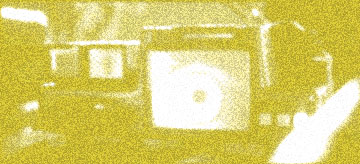 |
| |
|
| >> |
ALPHAVILLE 1965 |
| >> |
These differences are fundamental to Godard's Alphaville, in which the populace is subordinate to a gigantic super-computer. Emotion, intuition, and other human faculties are rejected in favour of rationality, logic, and sterility; the Bible, common to many hotel bedside tables in 1965, is replaced by a dictionary – and even the dictionary definitions are replaced and interchanged to further suppress emotions. Tragically, as the film's hero, Lemmy Caution, escapes with Natascha, it becomes clear that the citizens of Alphaville have been completely dependent on the machine's existence. Their terminal 'disorientation' emphasizes their utter dehumanization. |
| >> |
//?cap275.jpg |
| |
 |
| |
|
| >> |
These films establish a sense of dystopia by manipulating preconceived relationships between man and machine. Humankind is comfortable when it is understood that they are superior to machine, and possess emotional capabilities that distinguish its humanity from machinery. Indeed, such a view would have been comfortable to audiences for these films. However, by endowing the replicants in Blade Runner with beyond-human abilities and by making the Alpha 60 computer superior in Alphaville, the traditional man-machine hierarchy is reversed. Likewise, the highly contemporary portrayal of the dystopic technocracy in Alphaville is a deliberate social commentary by Godard, the director. Through the anachronism and subversive symbolism pervasive in Alphaville, Godard questions the values of society in an increasingly technocratic and technologically advanced world. Similarly, the new Nexus-6 replicants in Blade Runner have gained emotions and empathy, making them question their slave-like role and fight for the answers to these questions. When Roy saves Deckard from falling off of a rooftop at the film's conclusion, this unexpected act of empathy causes Deckard – and the audience – to question his own humanity. Roy has defeated the last obstacle between man and machine, and a traditional (or contemporary) system of values becomes invalid. |
| >> |
//?BladeRunner-112.jpg |
| |
 |
| >> |
The development of futuristic robots and machines, then, confronts humanity with humanity itself: what does it really mean to be human? The rather pessimistic portrayals of humanity in The Cabinet of Dr. Caligari, Leger’s Ballet Mecanique, and A Clockwork Orange create dystopic settings that, without robots or machines, question the definition and limits of humanity, and broaden the interpretive scope of the futurstic films. |
| |
|
| >> |
BALLET MECANIQUE 1924 |
| >> |
Ballet Mecanique begins as a cosmetic interpretation of dehumanization, but eventually illustrates a disconcerting dehumanization of its characters. Appropriately-titled, the film depicts jarring juxtapositions and evocative comparisons and pushes the boundaries of technocracy and humanity. It reduces humanity to purely mechanized actions – a commentary on both the future and the past, where the Industrial Revolution (and subsequent, rapid technological revolutions in transportation and communication, with the advent of rail, automobiles, and radio) has reduced many working-class positions to below those of a machine. |
| >> |
//?Avant_Garde_Disk01-13.jpg
//?Avant_Garde_Disk01-19.jpg |
| |
 |
| |
 |
| >> |
Furthermore, the actors in Ballet Mecanique play kits of parts to be assembled, rather than completely formed humans; even by simply masking part of the face, and revealing only the eyes or mouth, Leger strips much of the humanity from the character. |
| >> |
//?Avant_Garde_Disk01-46.jpg
//?Avant_Garde_Disk01-79.jpg |
| |
 |
| |
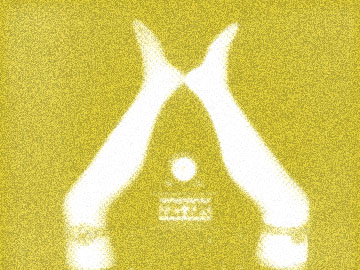 |
| |
|
| >> |
THE CABINET OF DR. CALIGARI 1920 |
| >> |
While Leger's film is a physical dehumanization, Caligari focuses on the mental and emotional aspects. A narcoleptic sideshow attraction, Victor, is manipulated by the rather unsympathetic Dr. Caligari, a relationship that, in a way, epitomizes the struggle for supremacy between man and machine. The ultimate revelation that Francis has fabricated the story, and is in fact a patient of Dr. Caligari, is eerily reminiscent of Rachael's implanted memories in Blade Runner. The tragedy of humanity lost is confused by the similarity between the afflicted, but entirely human, Francis, and the unaware replicant, Rachael. |
| |
|
| >> |
A CLOCKWORK ORANGE 1972 |
| >> |
Similarly, in Kubrick's A Clockwork Orange, the protagonist is manipulated to have limits on his emotional independence. Alex begins as an affable, carefree, and rather violent hooligan, but his instincts are systematically manipulated by government scientists to be beyond his control. Deprived of his own instincts, the dehumanized Alex is miserable; indeed, he was happier in prison, where he was physically incarcerated, than he was as a free man – without instinctual independence. The following images contrast his prison cell, which he has been able to personalize, with the sterility of the government clinic, which ultimately foreshadows his involuntary reaction to emotional 'vices', such as sex and violence. |
| >> |
//?CLOCKWORK_ORANGE-316.jpg |
| |
 |
| >> |
//?CLOCKWORK_ORANGE-342.jpg |
| |
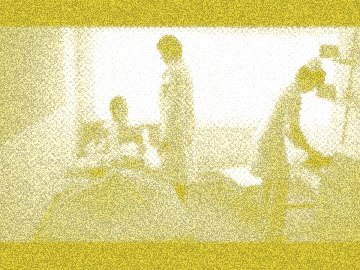 |
| >> |
//?CLOCKWORK_ORANGE-594.jpg |
| |
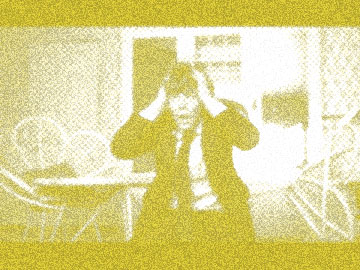 |
| |
|
| >> |
Kubrick suggests that even prison is preferable to mental manipulation, for at least prison preserves a sense of humanity and individuality. The unobjectionable portrayal of the prison cell emphasizes its inability to incarcerate mental capabilities, and implies that dystopia arises from the opposite condition. A contradiction between human independence and technological regimentation emerges in the form of 'Big Brother' governments integral to many of the films' dystopic environments. |
| >> |
The growing correlation between technology and socio-political trends of the early- to mid-twentieth century, fuelled by Modernism's technological ambitions, inevitably manifested itself politically as well, notably in the 'future' portrayed by Fritz Lang's Metropolis, Brazil, Blade Runner, and Alphaville. There are different degrees of polarization within social strata in these films, but common to all is the duality between the dehumanization of the non-elite and to the restriction of individual freedoms, and an eventual rejection of said restrictions. |
| |
|
| >> |
ALPHAVILLE 1965 |
| >> |
The 'Big Brother' concept is manifested explicitly in the technocracy of Alphaville. One is under the impression that they are constantly monitored, as Caution encounters (and dispatches) two assassins early in the film, and strictly controlled, such as the manipulation of the dictionary. The rational heartlessness of Modern Parisian architecture furthers the technocracy (and simultaneously, creates an anachronistic familiarity with contemporary audiences to further contemporary dystopia). The population of Alphaville has been systematized, sacrificing individuality for collectivism, and unwittingly have become subjects of a single master, Alpha 60's creator, Von Braun. Indeed, through the replacement of “why” with “because”, they have become simple drones, shepherded by Alpha 60. Without Lemmy Caution's heroic intervention – he attacks the vulnerability of Alpha 60 by asking it a poetic riddle beyond its purely rational capabilities, and the computer self-destructs – Alphaville would have never changed. |
| >> |
//?cap318.jpg |
| |
 |
| |
|
| >> |
BRAZIL 1985 |
| >> |
Terry Gillam, in Brazil, envisions a similar culture dominated by rules, limitations, and bureaucracy, from which an escape – such as the one attempted by his protagonist, Sam Lowry – is impossible. Gillam contradicts the restrictiveness of Sam's physical world with the soaring freedom of his dreams, echoing Kubrick on the emphasis of mental capability. However, by pursuing and ultimately realizing his dreams, Sam is left with neither dreams nor reality, but a confusing and dystopic combination of the two. Indeed, only when the physical world is removed from Sam - through imprisonment - can he dream again. The end of the film shows a tragic heroism in Sam, for despite his captivity, he lives vicariously through his dreams; however, it also underscores the complete subordination of humankind to the limitations imposed on them, where they are unwilling – with the exception of Sam – to even question these limitations. |
| >> |
//?BRAZILDISC1-583.jpg |
| |
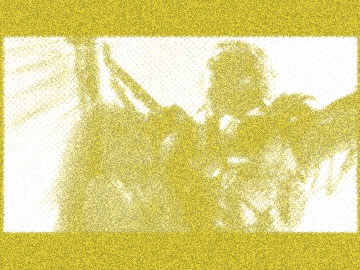 |
| >> |
//?BRAZILDISC1-730.jpg |
| |
 |
| |
|
| >> |
Thus we return once more to Blade Runner, in which the replicants are in a class subordinate to people; however, as the new replicants have gained mental and emotive independence, the film questions the integrity of the highly polarized social hierarchy. Acknowledging the interrelationship between humanity and social responsibility, the increasingly blurred lines between man and machine push the boundaries of social responsibility. Lang suggests a resolution between classes in Metropolis (1927) , but interestingly, it is an absolute rejection of logic and reason. Instead, it is emotive, subjective, and even religious; it is historicist without being practical, and simply too convenient. |
| >> |
//?METRAPOLIS_USA_NTSC-64.jpg |
| |
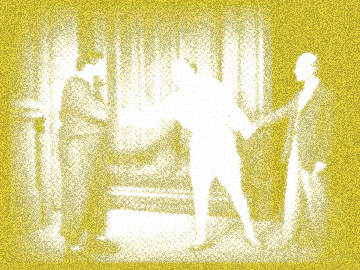 |





